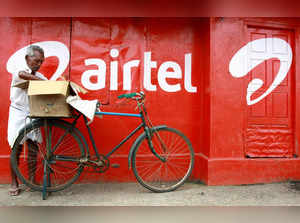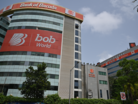 Reuters
ReutersBudget with ET
For instance, conversion of a 4G base station into a 5G one via a software upgrade is estimated to cost Airtel $1,000-1,500 vs buying a pure 5G variant (running on C-band spectrum) that costs around $20,000, these people added.
“Airtel is looking to optimise costs and airwave resources by selectively beefing up 5G network capacity and coverage in the B&C circles by refarming select 4G mid-bands where it has the fattest spectrum holdings,” one of the people cited told ET.
Airtel’s largest mid-band spectrum holdings are in the 2300 MHz (790 units) and 1800 MHz (363 units) frequencies. In the last spectrum sale in June, it also beefed up holdings in the sub-GHz 900 MHz band, now aggregating 198 units. A slice of 900 MHz spectrum will also be refarmed to bridge 5G coverage gaps in markets where it’s already seeing a jump in demand via upgrades from 4G.
There are a total 14 markets under the B&C circle categories. Key circles include Punjab, UP-East, UP-West, Haryana, Kerala, Rajasthan, MP, West Bengal, Bihar, Odisha, Assam and Northeast.
At press time, ET’s queries to Airtel went unanswered.
The nation’s second-largest telecom operator recently inked multi-year, multi-billion dollar deals with Finland’s Nokia and Sweden’s Ericsson for extension of 4G and 5G contracts.
Airtel, though, plans to use its airwaves in the 2100 MHz and 900 MHz bands primarily for 4G expansion and the 26 GHz band for 5G-based fixed wireless access (FWA) services.
The company aims to bolster its 4G and 5G networks and upgrade its remaining 2G users in B&C circles amid competition from Reliance Jio, and even as Vodafone Idea (Vi) readies to quickly revamp its 4G operations and launch 5G, backed by its recent fundraise via the equity route.
Airtel’s 5G user base has already expanded to 105 million in Q2FY25—from 90 million in Q1FY25—reflecting 30% penetration, and the trend is slated to continue in Q3FY25 and Q4FY25 amid rising availability of 5G budget smartphones.
Latest mobile user data collated by Trai showed that among the Big 3 private carriers, Airtel was the sole gainer of high-paying mobile broadband users in October 2024, reporting 2.08 million 4G/5G user additions.
At present, Airtel uses the non-standalone (NSA) mode—that rides on existing 4G network infrastructure and airwave resources—to offer 5G consumer mobile services nationally.
During the telco’s fiscal second quarter earnings call, managing director Gopal Vittal had said Airtel is using its “powerful mid-band spectrum (holdings) in combination with airwaves in the 3.5 GHz band to gain the geographical reach and coverage reach, which in turn, allows the company to operate 5G services on the NSA mode.
To be sure, Airtel plans to fully migrate its 5G mobile broadband services to the standalone (SA) mode in the next 3-4 years once demand picks up and as more 4G users upgrade to the next-gen service. The company, though, is in no hurry to do this since such an exercise would entail another Rs 30,000-40,000 crore of investments on sub-GHz 5G spectrum.
At present, only Jio operates 5G services nationally on the SA mode and is the sole holder of efficient sub-GHz spectrum in the 700 MHz band being used for 5G.
(Catch all the Business News, Breaking News, Budget 2024 Events and Latest News Updates on The Economic Times.)
Subscribe to The Economic Times Prime and read the ET ePaper online.
(Catch all the Business News, Breaking News, Budget 2024 Events and Latest News Updates on The Economic Times.)
Subscribe to The Economic Times Prime and read the ET ePaper online.









































 Get Unlimited Access to The Economic Times
Get Unlimited Access to The Economic Times
